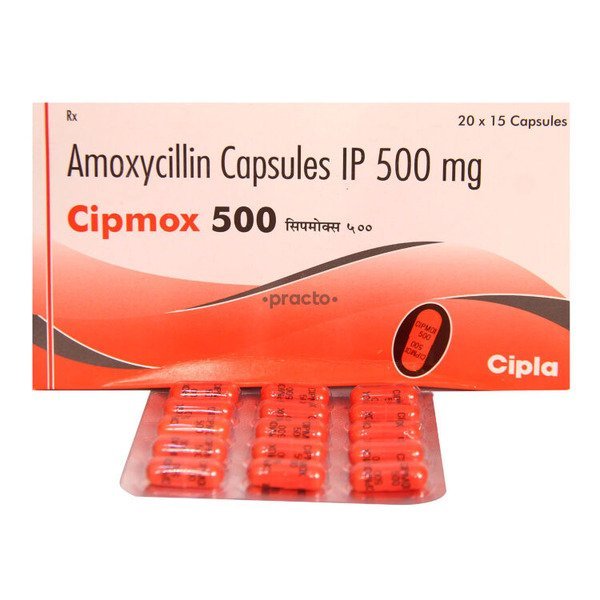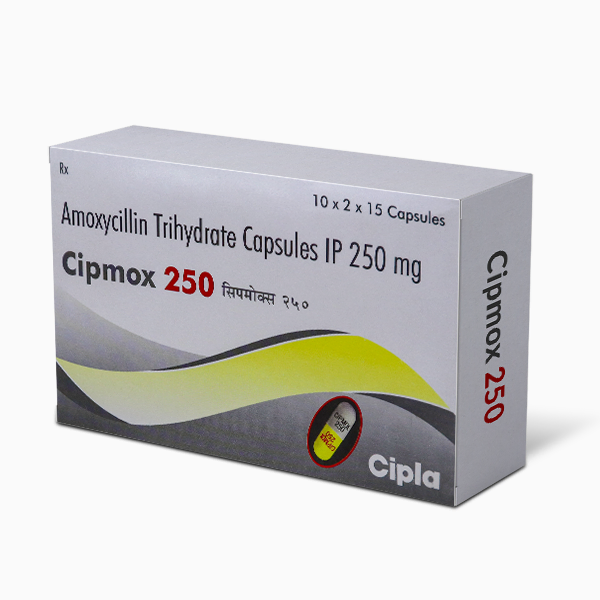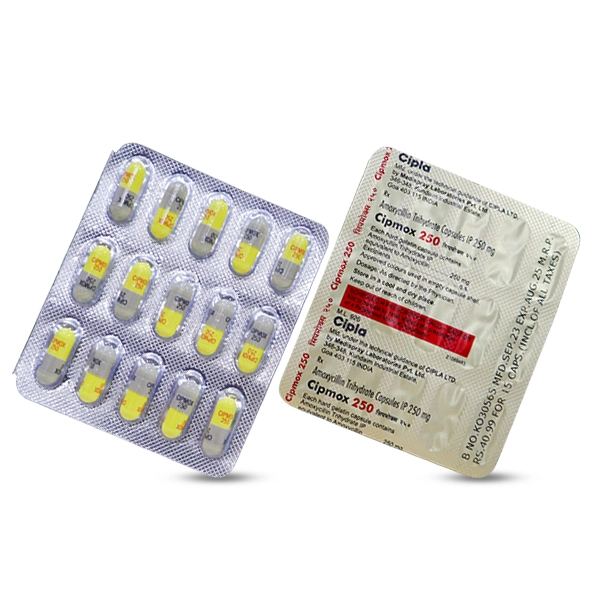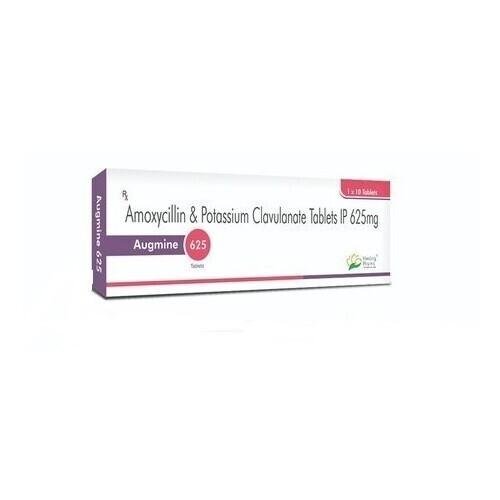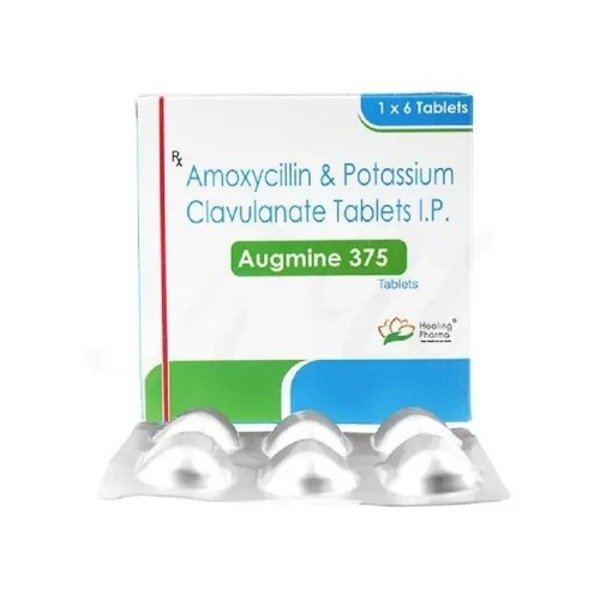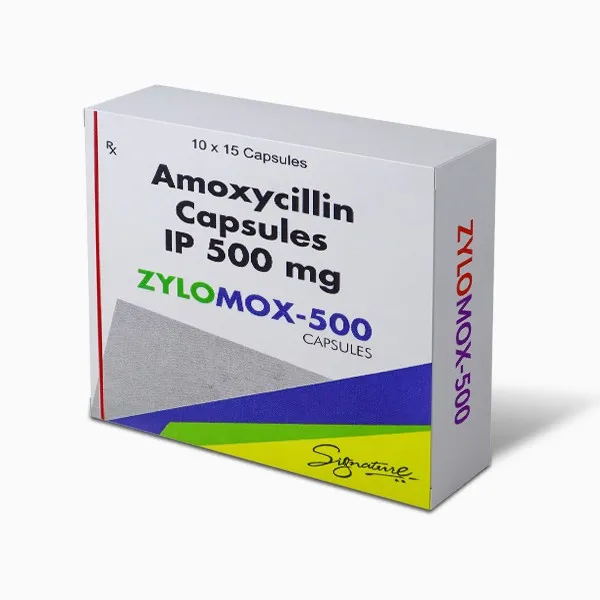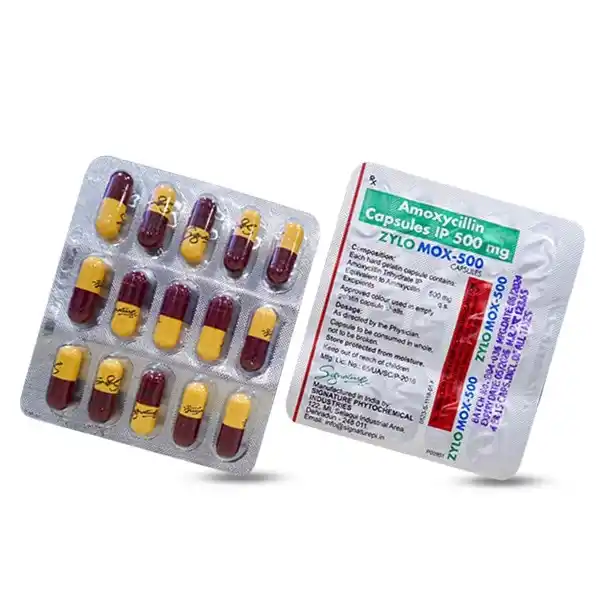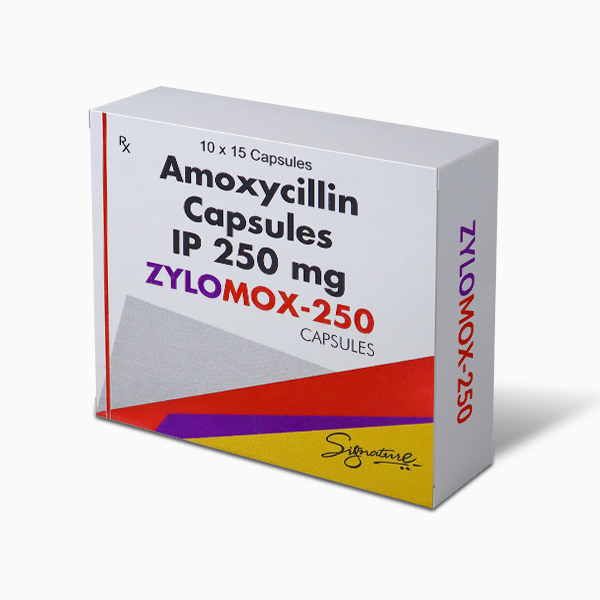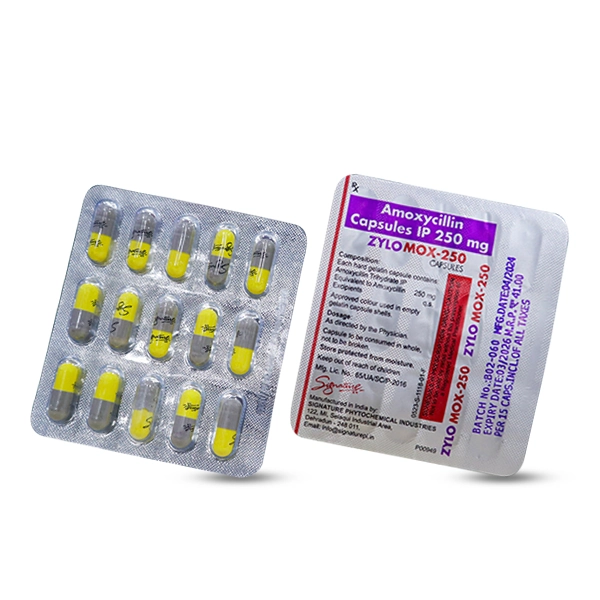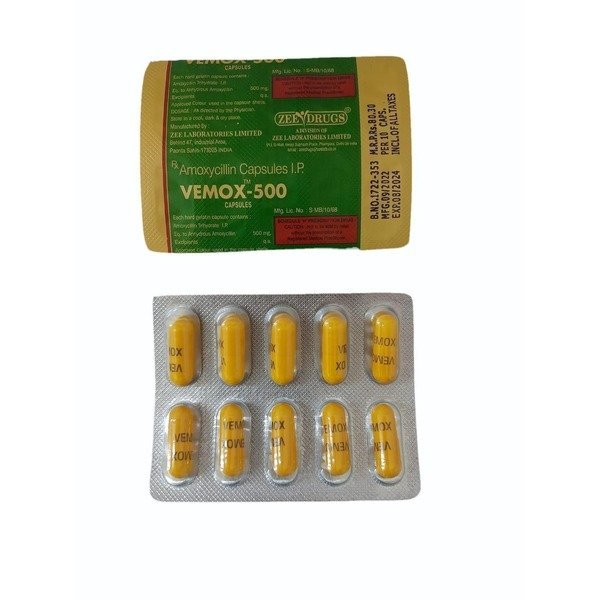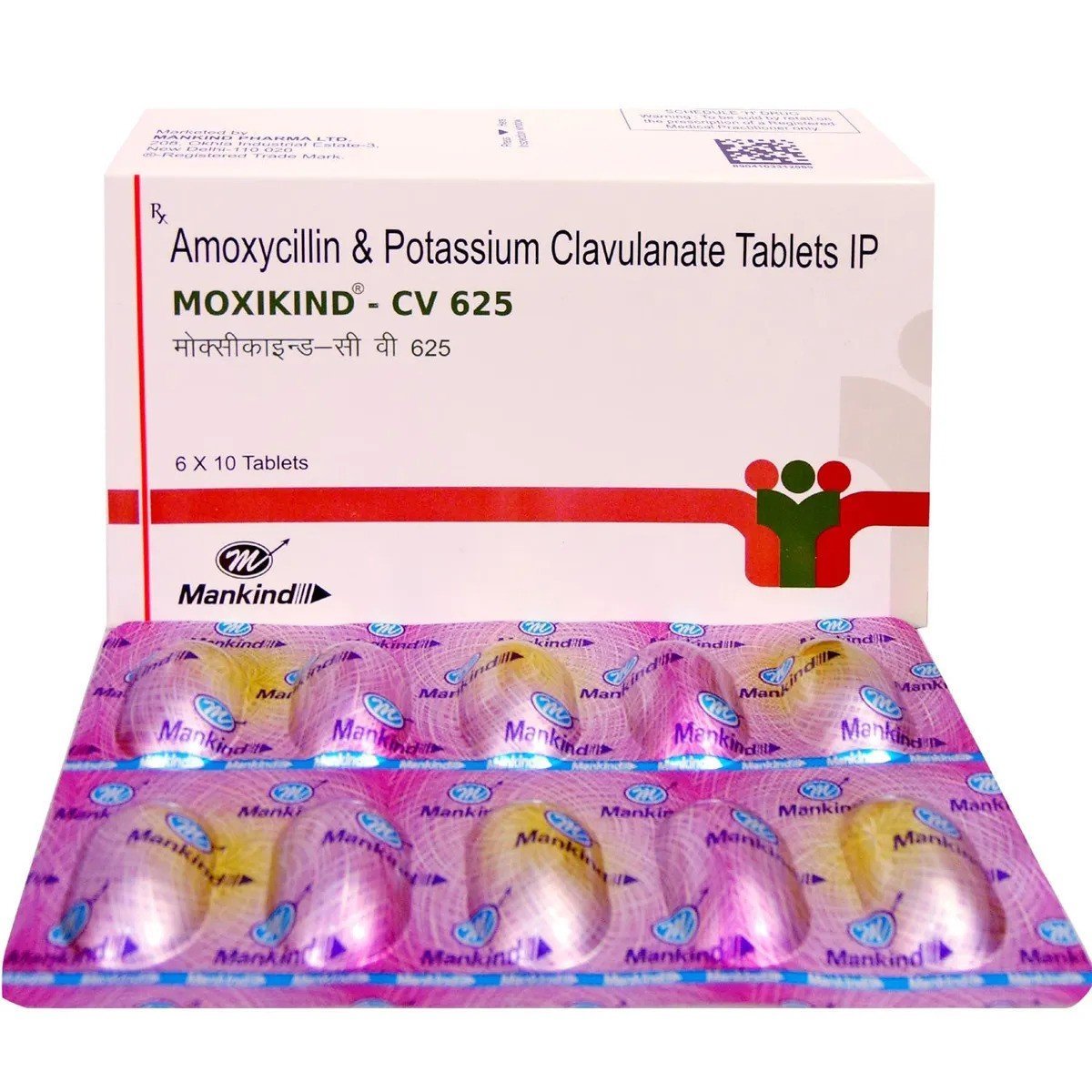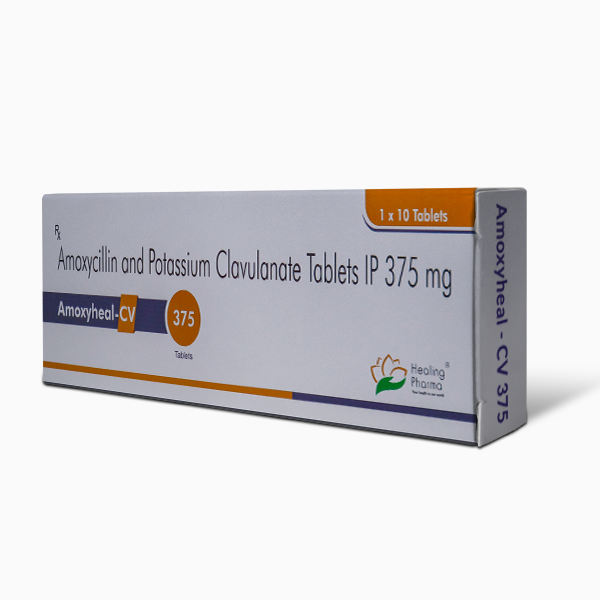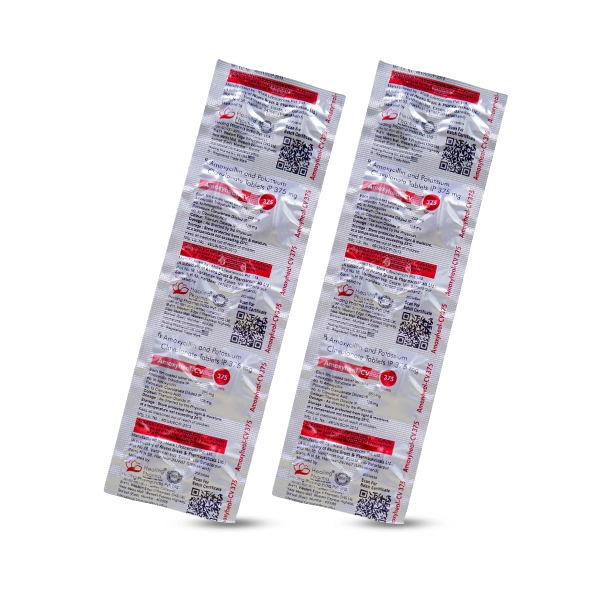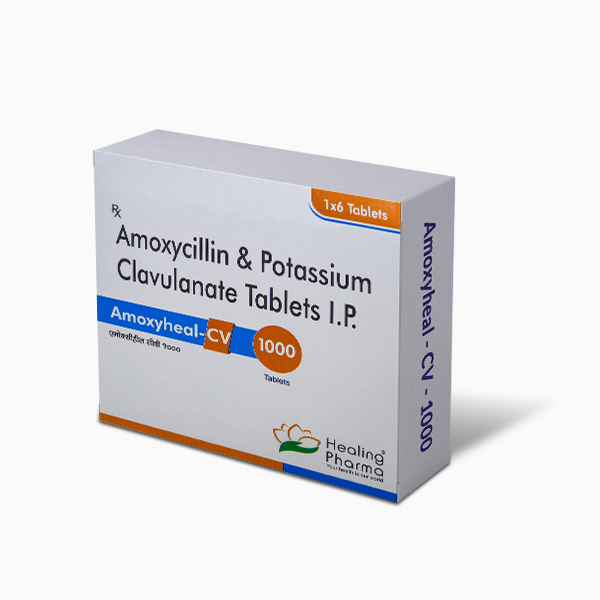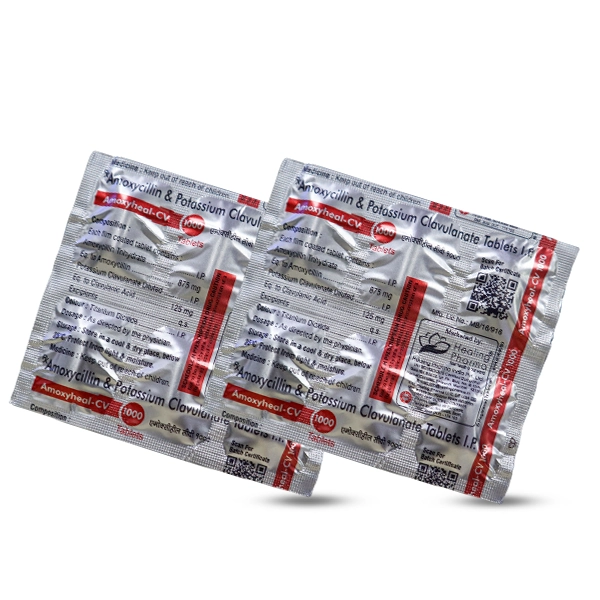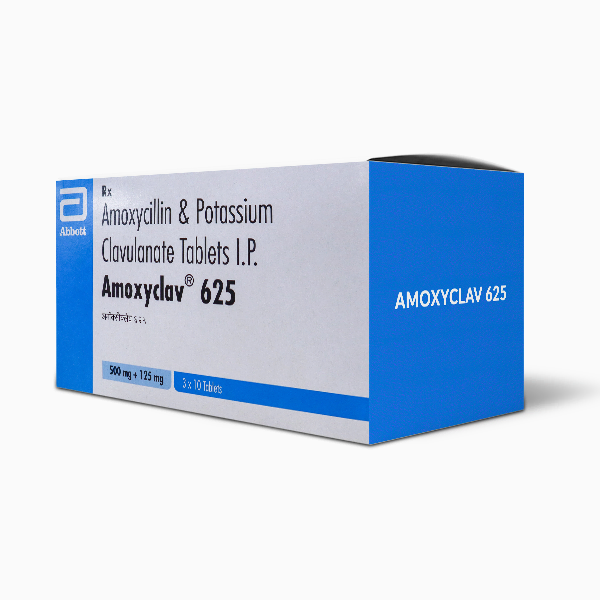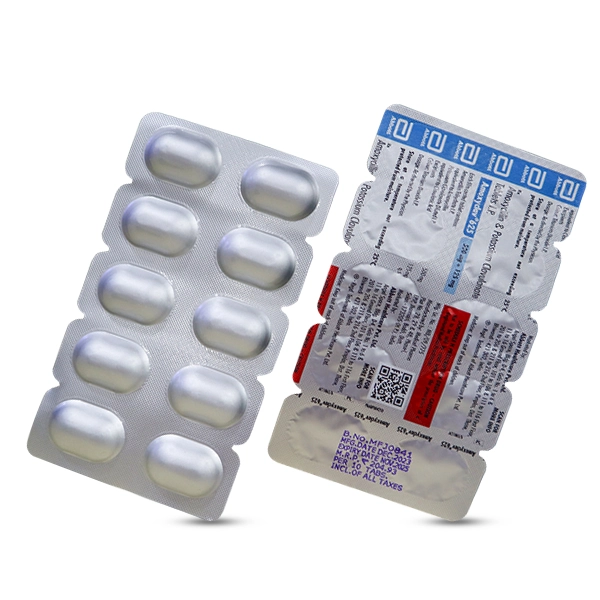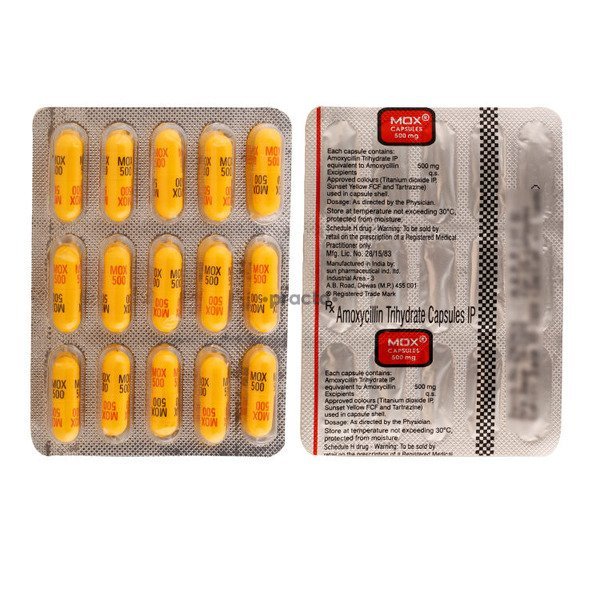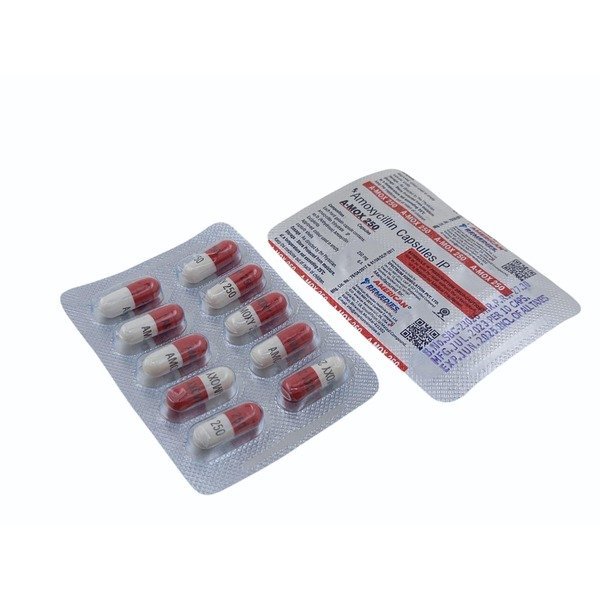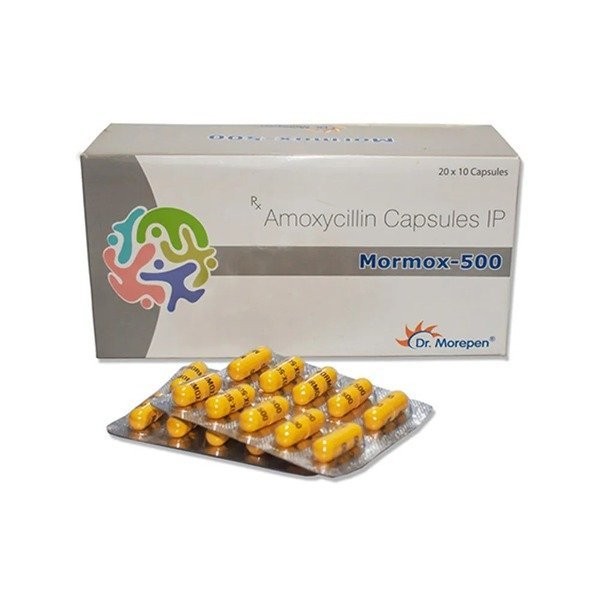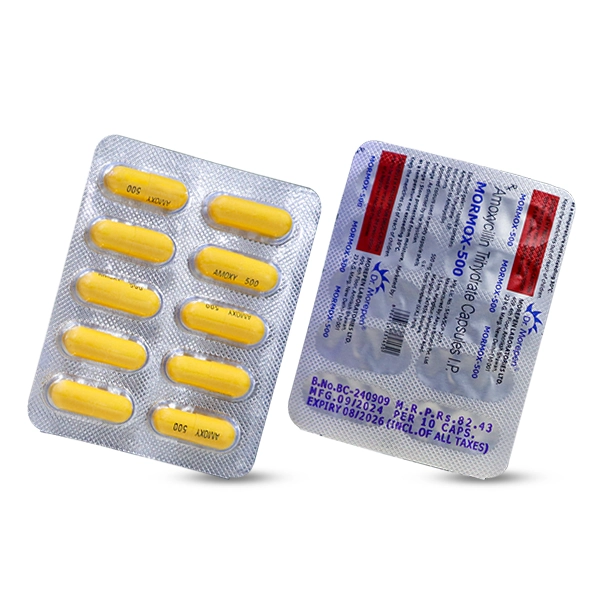Amoxycillin is an antibiotic that belongs to the penicillin class with active ingredient Amoxycillin trihydrate, that inhibits bacterial cell wall synthesis. Amoxycillin combines with penicillin-binding proteins (PBPs) in bacterial cell walls, which results in peptidoglycan inhibition and eventual bacterial cell lysis and death.
Key Features:
About |
|
Drug Class | Amoxycillin trihydrate |
Components | Cellulose magnesium stearate, sodium starch glycolate etc. |
Uses | For the treatment of Bacterial infection. |
Effective Against | Gram positive bacteria: Staphylococcus pyogenes, Streptococcus pneumoniae. Gram negative bacteria: Escherichia coli, Haemophilus influenzae. |
Medications that contain Amoxycillin trihydrate as an active ingredient
- A-mox 250 mg
- A-mox 500 mg
- Amoxyclave 625 mg
- Amoxyheal CV 1000 mg
- Amoxyheal CV 375 mg
- Moxikind CV 625 mg
- Augmine 375 mg
- Augmine 625 mg
- Cipmox 250 mg
- Cipmox 500 mg
- Mormox 500 mg
- Vemox 500 mg
- Zylomox 250 mg
- Zylomox 500 mg
How does Amoxycillin work?
Amoxicillin inhibits cell wall synthesis in bacteria by:
- Binding to penicillin-binding proteins (PBPs): Amoxicillin accumulates at penicillin-binding protein sites in bacterial cell walls.
- Peptidoglycan synthesis inhibition: Amoxicillin blocks peptidoglycan synthesis, an essential component of bacterial cell walls.
- Bacterial cell lysis: The bacterial cell wall is weakened and causes cell lysis and death.
Dosage
The dose of amoxicillin depends on the type of infection, severity, and patient considerations:
- Adults: 250-500 mg every 8 hours or 500-875 mg every 12 hours
- Children: Dosage based on weight and age
Factors Influencing Dosage
- Type and severity of infection: Dosage could be varied based on the severity and type of the infection.
- Patient factors: Dosage could be influenced by age, weight, kidney function, and other medical conditions.
Side Effects
- Nausea and vomiting
- Diarrhea
- Stomach pain
- Allergic reactions (rash, hives, anaphylaxis)
- Yeast infections
Interactions
Amoxicillin may interact with some drugs, such as:
- Oral contraceptives: Their efficacy may be decreased by changing gut flora.
- Anticoagulants such as warfarin: Increased risk of bleeding due to changed vitamin K production.
- Probenecid: It decreases renal tubular secretion of amoxicillin, thus increasing its half-life.
- Drugs that influence renal function or gut flora: Use with caution when administered together.
Pharmacokinetics
- Absorption: Readily absorbed from the gastrointestinal tract, with bioavailability of about 70-90% when administered orally.
- Distribution: Widely distributed in the body, with good tissue and body fluid penetration.
- Metabolism: Little hepatic metabolism, with the majority of the drug being excreted unchanged.
- Excretion: Mainly excreted via the kidneys, with a half-life of about 1-1.5 hours.
Clinical Trials
- Current clinical trials have investigated:
- New formulations: Encapsulating amoxicillin in nanoparticles to increase antibacterial effectiveness.
- Combination treatments: Amoxicillin used with beta-lactamase inhibitors or other antibiotics to bypass resistance.
- Alternative treatments: Researching bacteriophages and antimicrobial peptides as alternatives.
Pharmacokinetic Parameters
- Bioavailability: ~70-90% (oral)
- Onset of Action: Within 1 hour
- Half-life: ~1-1.5 hours
- Protein Binding: ~20%
- Metabolism: Insignificant hepatic metabolism
- Excretion: Renal
Efficacy in Varying Infections
- Urinary Tract Infections (UTIs): Amoxicillin boasts an impressive clinical cure rate of up to 90% or more in uncomplicated cystitis. It’s also highly effective against E. coli, which is the leading cause of UTIs, with bacteriologic efficacy rates between 85-95%.
- Respiratory Tract Infections: Amoxicillin is active against respiratory pathogens such as Streptococcus pneumoniae, Haemophilus influenzae, and Moraxella catarrhalis.
- Skin and Soft Tissue Infections: Amoxicillin may be employed to manage skin infections such as cellulitis and skin abscesses.
- Ear Infections: Amoxicillin is commonly used for middle ear infection (otitis media), particularly among children.
Factors Affecting Efficacy
- Bacterial Resistance: The action of Amoxicillin can be restricted by beta-lactamase-producing bacteria, which can inactivate the antibiotic.
- Dosage and Duration: Dosage and duration of treatment are important factors for maximum efficacy.
- Combination Therapy: Administration with beta-lactamase inhibitors such as clavulanic acid can boost its effectiveness against resistant bacteria.
Clinical Evidence
- Research has established that amoxicillin is as effective in treating cystitis in women, men, and women during pregnancy.
- Short-course amoxicillin regimens (3-7 days) have proven as effective as other first-line UTI drugs.
- Symptoms usually improve markedly within 1-3 days of initiating treatment.
Pivotal Points
- Effective against various bacterial infections: Amoxicillin is effective against respiratory tract infections, urinary tract infections, skin and soft tissue infections, and ear infections.
- Importance of accurate dosage and treatment length: Accurate dosage and treatment length are important for maximum effectiveness and reduction of side effects.
- Bacterial resistance: Bacterial resistance can restrict the activity of amoxicillin, thus strengthening the case for prudent use and combination therapy.
Future Research
- Ongoing research and development: Research continue to work on new antibiotics and methods to deal with bacterial resistance.
- Responsible use of antibiotics: Encouraging responsible antibiotic use and stewardship is important to ensuring the effectiveness of amoxicillin and other antibiotics.
Precautions
- Allergic reactions: Patients with established penicillin allergy need to be cautious.
- Pregnancy and lactation: Caution is advised as there is available but limited data on safety.
- Kidney or liver disease: Dosage adjustment is possible.
Conclusion
Amoxicillin is a popular antibiotic used to treat several types of bacterial infections. Its mechanism, dosage, side effects, drug interactions, and precautions can be understood to ensure effective and safe treatment. Although bacterial resistance may cut its usefulness short, using amoxicillin along with beta-lactamase inhibitors or with proper usage can ensure its continued effectiveness.
Amoxicillin is effective against respiratory tract infections, urinary tract infections, skin and soft tissue infections, and ear infections. Accurate dosage and treatment length are important for maximum effectiveness and reduction of side effects.
References
https://pubmed.ncbi.nlm.nih.gov/18611959/
https://pmc.ncbi.nlm.nih.gov/articles/PMC10376083/
FAQs
- Can I take amoxicillin with food?
Yes, amoxicillin may be taken with or without food.
- May I drink alcohol when taking Amoxicillin?
No, you should Avoid alcohol while taking Amoxycillin.
- What for Amoxycillin is used?
Amoxycillin is an antibiotic medication that is used to treat bacterial infection.
- What are the common side effects?
Nausea, Vomiting, Diarrhea, and Abdominal pain.
- Is Amoxycillin is safe for everyone?
Amoxycillin is generally safe, but individuals with some penicillin allergies may avoid it.



